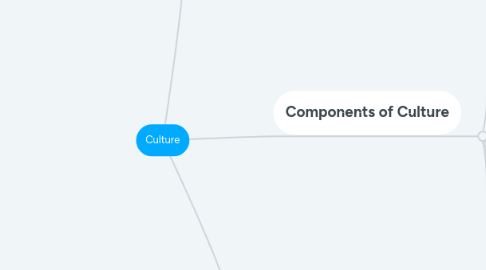
1. What is culture / How can I define it.
1.1. The holidays, the communities, the arts, the culture, the country, the languages, the beliefs and religions as well as the values and traits that many individuals have in common and identify to.
1.2. People can relate/identify to it. It is part of the identity.
1.3. Communities often share a culture, often due to history or language
1.4. culture is often created through individual and collective experiences and individual lives during his lifetime. It is often passed down by their parents/families.
1.5. Culture creates a sense of belonging within a group who share cultural similarities.
2. Kinds or word/ideas/phrases related to culture
2.1. Words that can define/closely linked to culture
2.1.1. commonalities
2.1.2. holidays
2.1.3. values
2.1.4. country
2.1.5. community
2.1.6. origins
2.1.7. sense of belonging
2.1.8. languages
2.1.9. art
2.1.10. geography
2.1.11. identity
2.2. DUMONT's perspective
2.2.1. Culture: a construct that is assimilated by osmosis, and has a collective, anthropological meaning that corresponds to the lifestyles, behaviours, attitudes and beliefs of a given society.
2.3. Primary/Secondary Cultures
2.4. Cultural Awarness
2.5. Explicit/Tacit aspescts of culture
3. Components of Culture
3.1. 3 components:
3.1.1. product
3.1.1.1. All artifacts produced or adopted by the members of the culture.
3.1.1.2. Products, both tangible and intangible, are located and organized in physical places
3.1.2. practices
3.1.2.1. the full range of actions and interactions that members of the culture carry out, individually or with others.
3.1.2.1.1. They also involve notions of appropriateness and inappropriateness, including taboos.
3.1.2.1.2. they include languages and other forms of communication (verbal & non-verbal) and self-expression.
3.1.3. perspectives
3.1.3.1. represent the perceptions, beliefs, values, and attitudes that underlie the products and that guide persons and communities in the practices of the culture.
3.1.3.1.1. They can be explicit but often they are implicit, outside conscious awareness
3.1.4. 5 components :
3.1.4.1. communities
3.1.4.1.1. the specific social contexts, circumstances, and groups in which members carry out cultural practices.
3.1.4.2. persons
3.1.4.2.1. the individual members who embody the culture and its communities in unique ways.
3.2. MElS
3.2.1. The role of the cultured teacher
3.2.1.1. Teachers are the bearers of culture:
3.2.1.1.1. they are part of a relationship with the world, with themselves and with others and they seek to bring students to distance themselves from the primary culture in order to gain access to the desired form of secondary culture.
3.2.2. Vision of culture
3.2.2.1. Culture as an object
3.2.2.1.1. a construct, or in a normative sense to mean a desired object.
3.2.2.2. Culture as a relationship
3.2.2.2.1. culture is first and foremost a relation
3.3. ‘intercultural knowledge competence' (ICC)
3.3.1. Various domains
3.3.1.1. Intercultural cognitive knowledge
3.3.1.2. Know-how Competence
3.3.1.3. Existential Competence
3.4. Awareness of culture
3.4.1. According to their own vision of culture awarness
3.4.1.1. Category 1: way of life/traditions
3.4.1.2. Category 2: institutions/history/structures
3.4.1.3. Category 3: norms/morals
3.4.1.4. Category 4: high culture
3.4.1.5. psychological dimension
3.4.1.5.1. words related to awareness
3.4.1.5.2. expressions referring to attitudes, especially tolerance
3.4.1.5.3. references to knowledge and understanding of other cultures

